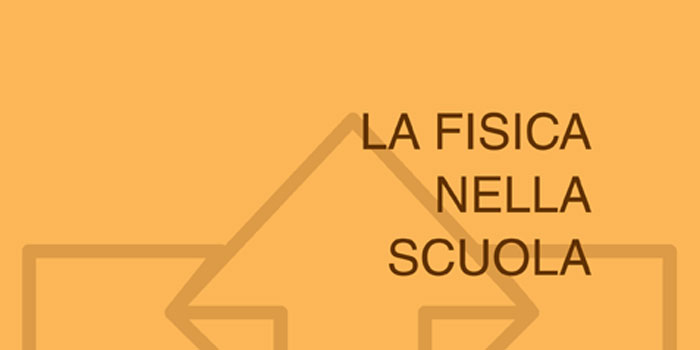Articoli rivista
 Anno XXXI - n.4 - ottobre/dicembre 1998
Anno XXXI - n.4 - ottobre/dicembre 1998 Blu del cielo e realtà degli atomi
After having worked on the evolution of the theories regarding why the sky is blue, a series of experiments is presented in order to make the phenomenon of light scattering easily understandable to students and to provide a possible teaching sequence on the topic. […]
 Anno LIV – n.4 – ottobre/dicembre 2021
Anno LIV – n.4 – ottobre/dicembre 2021 Breve storia dell’italo-americano, Rocco Anthony Petrone, che guidò l’uomo alla conquista della Luna
This brief memoir recalls Rocco Petrone, an ante litteram “brain drain” from Lucania to the United States, then an American citizen, who played a fundamental role in completing, fifty years ago, the mission of man’s first landing on the Moon. […]
 Anno XLI - n.4 - ottobre/dicembre 2008
Anno XLI - n.4 - ottobre/dicembre 2008 Bruno Touschek: pensare fisica in grande
A homage to Bruno Touschek, to his personal conception of physics as a creative enterprise and to his most important contribution: ADA, the small ingenious prototype of the great colliders of today. […]
 Anno XXXVI - n.3 - luglio/settembre 2003
Anno XXXVI - n.3 - luglio/settembre 2003 C’è del gas all’interno di una lampadina?
Students at their last year in high-school measure the temperature in different points of a lighted incandescent lamp bulb oriented in different directions and always find the highest temperature at the top. When asked why, their answers reveal interesting patterns of reasoning: heat goes up (without further explanation); […]
 Anno XXXVII - n.4 - ottobre/dicembre 2004
Anno XXXVII - n.4 - ottobre/dicembre 2004 Caduta di un imbuto in un tubo d’acqua
In a school experiment the fall of a loaded plastic funnel in a long transparent cylindrical vessel full of water was measured and the experimental data were analysed. Based on the analysis of the data and of the experimental conditions, a law of the turbulent resistance of the medium was looked for and formulated. […]
 Anno XXXI - n.1 - gennaio/marzo 1998
Anno XXXI - n.1 - gennaio/marzo 1998 Campi, energia e lavoro. Motivazioni di una proposta
We enphasize here the educational reasons lying behind a reversal of the traditional approach to the introduction of work, energy, potential, and fields at high school level. The details of this approach have been fully described elsewhere. […]
 Anno XXVI - n.2 - aprile/giugno 1993
Anno XXVI - n.2 - aprile/giugno 1993 Campo: concetto, misura, proprietà e conseguenze attraverso esperimenti quantitativi. 2° Premio: Liceo Scientifico M. Buonarroti – Monfalcone.
This paper describes the second prize-winning entry to 1991-1992 “Prernio Bonacini” contest for high-school boys on gravitational field. The 15 year-old students measured the gravitational constant, ascertaining quantitatively the proceeding of the gravitational field. […]